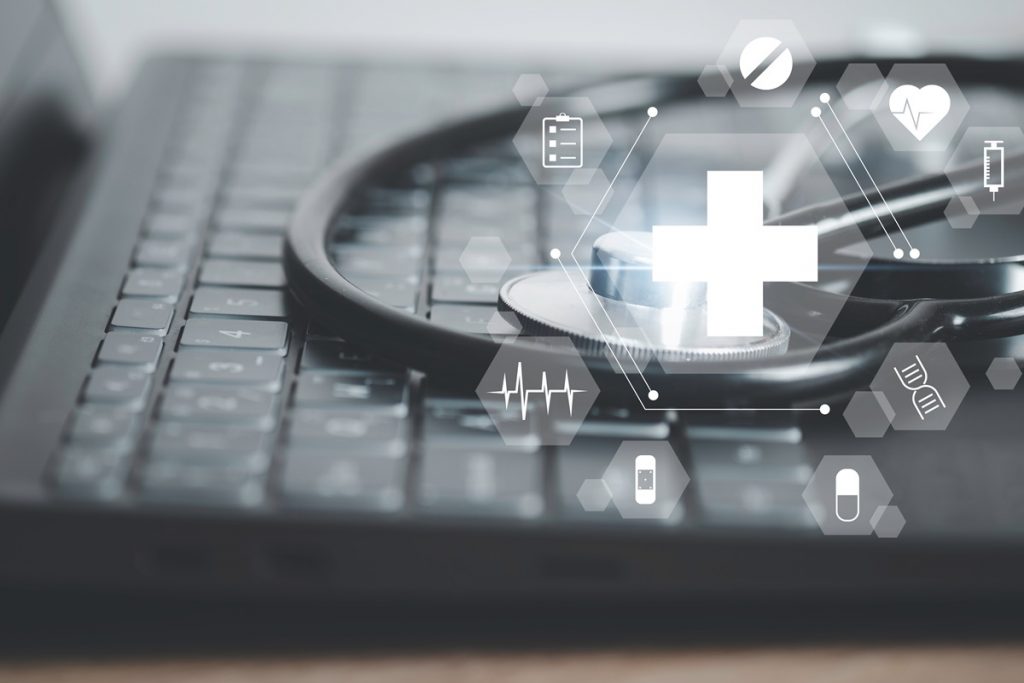The days of cookie-cutter medical education sessions and unengaging, didactic data presentations are–mostly–over. These days, medical education and training programs are all about customization, personalization, and innovation. In this article, we take a look at 10 of the hottest trends in medical education and learning programs.
-
Virtual & Augmented Reality
Kicking off the top 10, virtual reality (VR) and augmented reality (AR) are two increasingly used tools for anatomy education and surgical training, offering immersive learning experiences. Beyond these use cases, the uptake of VR/AR has been slower. However, more and more companies are realizing the benefits of VR/AR for teaching healthcare providers (HCPs) about complex biological processes and novel drug classes’ mechanisms of action. We will definitely see more VR/AR medical education solutions in the years to come!
-
Gamification
Gamified learning programs use a combination of points, levels, and rewards or awards to encourage participation and competition, with the aim of making learning both fun and effective. Integrating game design elements in medical education has been shown to increase engagement and participant motivation, and studies suggest that gamification may improve learning outcomes in HCPs.
-
Microlearning Modules
Virtual microlearning modules deliver heavy information in digestible “bite-sized” chunks, catering to busy HCPs who are unable or unwilling to attend hour-long lectures. Presenting content in various formats and making it available online over several weeks results in superior convenience and flexibility for participants. Studies have found that microlearning has a positive effect on the knowledge and confidence of HCPs in performing procedures, retaining knowledge, studying, and engaging in collaborative learning.
-
Social Media as a knowledge-sharing tool
Platforms like X (formerly Twitter) and Facebook are increasingly being used for educational purposes, including facilitating knowledge-sharing, discussions, and professional networking among HCPs and Digital Opinion Leaders (DOLs). While this approach has many advantages, including global participation and enhanced access to senior experts, it also has drawbacks. Among others, the “learning” tends to be superficial in nature and there is always a risk of misinformation spreading. In addition, intellectual property infringement is a growing problem on social media. As an alternative or addition to “Tweetorials” and Twitter/X congress coverage, Pharma companies can consider engaging DOLs and HCPs via secure community boards for sharing best practices or via virtual journal clubs for reviewing the latest data.
-
Simulation-Based Learning
Simulation-based learning can allow students to practice clinical skills and make decisions in life-like scenarios without the risk of harming actual patients. This method, when executed together with sound pedagogy and curriculum planning, is particularly effective in preparing students for real-world clinical practice. Outside of medical school, this method can also be used for continuing medical education and other learning activities.
-
The “Flipped Classroom” Approach
The flipped classroom model inverts traditional in-class activities of learning by having learners complete assignments before the live “in-class” session. In today’s virtual world, this might involve learners watching short or chapterized videos, listening to a podcast, or reviewing journal articles or slide decks on their own time in a secure online portal. This then allows the live (web or in-person) session to be spent cementing and creating connections to that knowledge and deepening understanding through peer collaboration, group discussions, interactive problem-solving exercises, and case studies.
-
Problem-Based Learning (PBL)
PBL in medical education merges theory and practice by asking participants to solve an open-ended, real-world problem by employing clinical scenarios. Originally designed for medical students, this methodology has since been integrated into diverse aspects of medical education.
PBL has been shown to be more effective than traditional, lecture-based methods in improving communication, problem-solving, and self-learning skills. However, its implementation may also require greater human resources and continuous training. To overcome this barrier, working with an experienced vendor and leveraging specialized virtual tools for presenting, commenting, and collaborating on clinical problems can help.
-
Artificial Intelligence (AI)
While far from perfect, AI has the potential to personalize learning experiences by adapting content to meet the individual needs of learners based on their progress and performance. It can also simulate patient interactions and provide instant feedback to help HCPs improve their efficiency and accuracy when diagnosing and prescribing. At this time, there is no regulatory guidance for the use of AI in medical education, indicating a need for policymakers to come together with interdisciplinary medical, AI, and education experts to reach consensus on ethical issues and develop such guidance.
-
Digital Learning Platforms
Secure online platforms offer flexible, on-demand learning opportunities that are accessible from anywhere at any time. These customizable platforms can include pre-reading materials to enable a flipped classroom approach, as well as interactive or gamified modules, quizzes, case studies, and the ability to track progress longitudinally. They can also be combined with other tools and approaches such as webinar-based educational sessions or DOL-led community boards.
-
Interprofessional Education and Multidisciplinary Learning Programs
Lastly, interprofessional education involves students from different healthcare disciplines working together in training. It encourages collaboration and understanding of each role, ultimately improving patient care outcomes. Multidisciplinary learning programs can be conducted either in real-time or asynchronously (anytime, over time) and can incorporate any and all of the approaches discussed above. Taking things a step further, sponsors may want to consider conducting virtual speaker programs with multidisciplinary faculty to develop diverse teaching materials for the learning sessions.
Medical Education in 2024 and beyond
Together, the above methods are reshaping medical education, making it more interactive, accessible, and aligned with the realities of modern healthcare. What is nice about all of them is that they can be used in combination to create a truly personalized experience. Because, in 2024 and beyond, that’s what medical education will be all about: customization, personalization, and innovation.
By Natalie Yeadon, President & CEO Impetus

